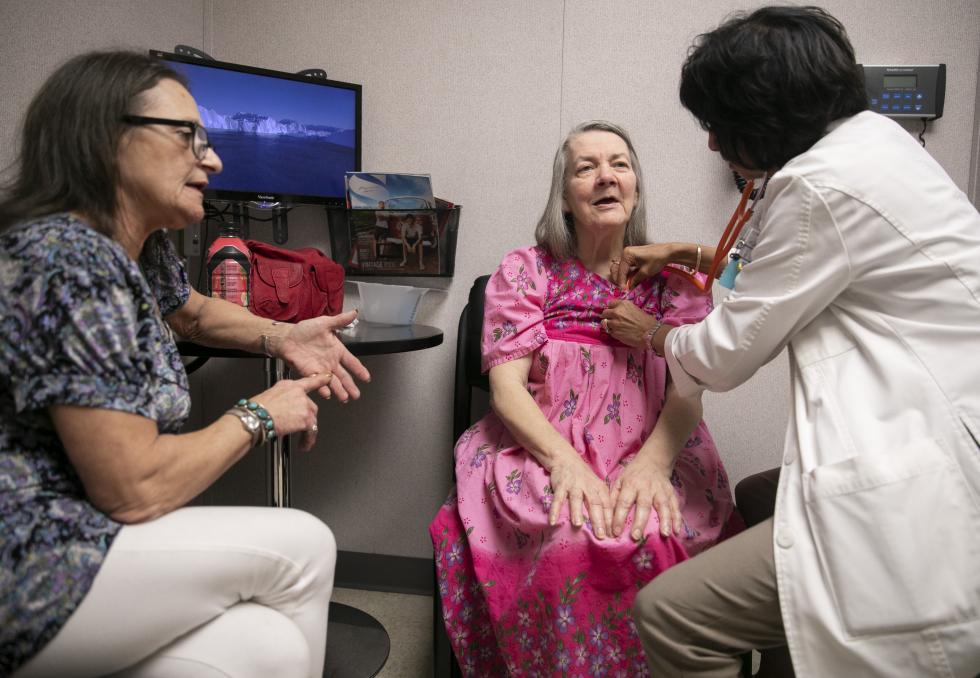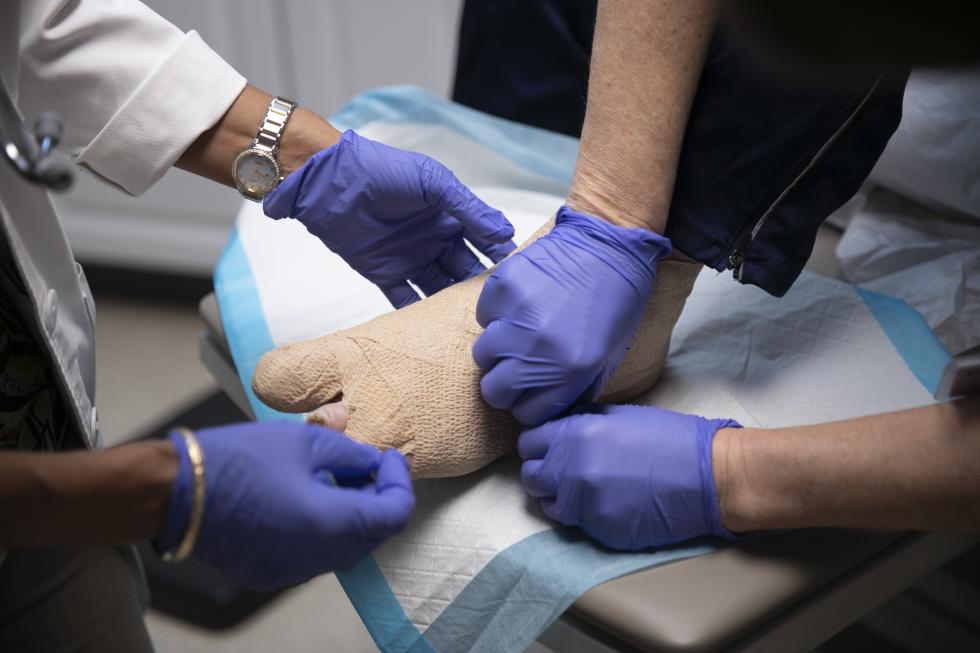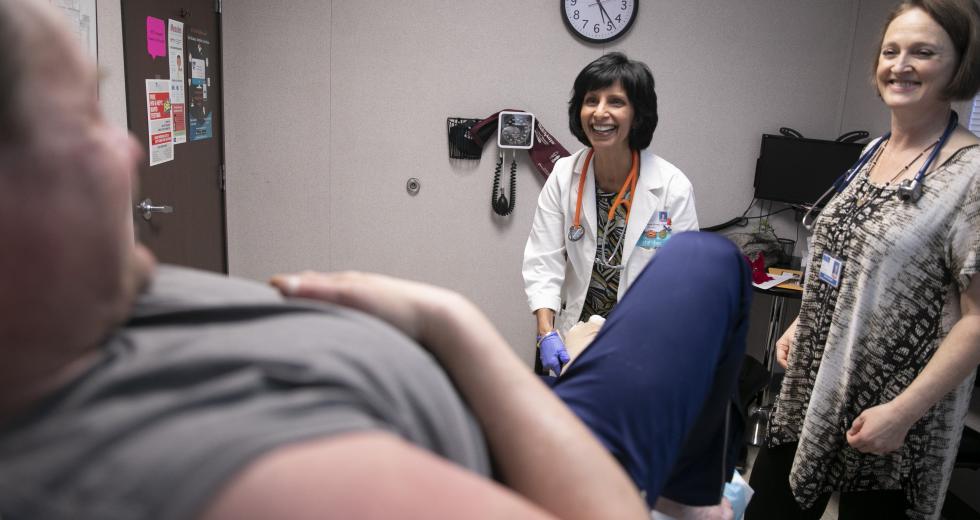Nurse practitioner Surani Hayre-Kwan sees long-time patients and first-timers. She manages chronic illnesses, diagnoses kids with colds and refers people to specialists.
She goes it alone or works with another nurse practitioner at the Russian River Health Clinic in Sonoma County. Sometimes a supervising physician is on-site, but often is a telephone call away.
“We don’t have enough physicians working in community clinics,” said Hayre-Kwan, who is also a nurse administrator for Sutter Health. “If there were no nurse practitioners, the clinic would have to close for the day because no one would be there to deliver care.”
As California faces a growing shortage of primary care physicians, the Legislature is considering what backers believe could be a partial solution: allowing nurse practitioners who get additional training and certification to work independently. With that additional authority, they could treat patients without a “practice agreement” from a supervising physician outlining what they can do. It also would allow some nurse practitioners to open their own clinics without a doctor overseeing them.
If it does so, California would join 22 other states and the Veterans Administration. Researchers for the Bay Area Council Economic Institute have found it would also save the state millions of dollars a year.
But California’s powerful doctors’ lobby has fought the idea since it was first proposed five years ago — saying that expanding the role of nurse practitioners would dilute the quality of medical care patients receive, and create a two-tiered system of treatment.
In a letter to the Legislature, the California Medical Association raised concerns about the type of training and assessment required to determine independence. And the association points out that the bill does not require or ensure that nurse practitioners will set up or work in underserved or rural areas.
Instead, the organization, made up of physician members, said it supports continued efforts to graduate more new physicians and to give them incentives to treat patients in underserved areas.
A Piece of the Puzzle To Boost Providers?
By 2030, California is projected to be short some 8,000 primary care clinicians, including doctors, nurse practitioners and physician assistants, according to a report from the Future Health Workforce Commission and another from Health Force Center at UC San Francisco.
Californians are concerned. More than a third believe there are not enough primary care providers and specialists in their communities, according to a poll released today by the California Health Care Foundation. In the Inland Empire and San Joaquin Valley, that number was nearly half — unsurprisingly given that those areas have some of the highest provider shortages.
More than 80 percent of residents polled want the governor and Legislature to make alleviating the shortage of doctors, nurses and other health care providers a priority.
Nurse practitioner Surani Hayre-Kwan examines patient Mary
Valesano. Her caregiver Georgia Manolakos-Fraley, left, has also
been Hayre-Kwan’s patient for nearly 20 years — describing the
nurse practitioner as a “really rare” and caring person. (Photo
by Anne Wernikoff for CalMatters)

Last week the state Assembly passed Assembly Bill 890, which would free many nurse practitioners from needing to operate under a supervising physician’s agreement. It also creates a path for nurse practitioners who want to work independently by opening their own practice. The bill, carried by Santa Rosa Democratic Assemblyman Jim Wood, now goes to the Senate.
“It’s a piece of the puzzle that will help us to increase the number of primary care providers,” Wood said. “In many cases, they’re already doing this pretty independently.”
A nurse practitioner is someone who has completed a master’s degree or a doctorate in nursing practice, as well as additional training. The majority work in primary care.
Already at clinics in low-income neighborhoods or in rural areas, nurse practitioners often hold office hours on their own or have an arrangement with a supervising physician to be available by phone. In larger organizations such as Kaiser Permanente, patients can choose to book with them directly, and may get them a quicker appointment than if they choose to wait for a physician.
The state’s Medi-Cal program for poorer patients also allows nurse practitioners who are enrolled with the program to bill it directly for work they are allowed to do under agreement with their supervising physician, and for services that would be covered if performed by a physician.
If the bill becomes law, experts say it could help ease the shortage by allowing nurse practitioners to work in rural or inner-city areas and could attract out-of-state nurse practitioners who want to practice more freely. According to the American Association of Nurse Practitioners, 75 percent of nurse practitioners work in primary care.
Cheaper, Yes, but Equivalent Care?
Physicians are unconvinced. California Medical Association lobbyist Megan Allred told legislators at a hearing last year that the bill would impact safety and called for modifications to “ensure lay individuals are not interfering with the practice of medicine.”
Physicians note that nurse practitioners have not undergone the same intense, years-long training that doctors go through. Physicians for Patient Protection argues that the bill would put patient safety at risk because nurse practitioners only complete a sliver of the hours of clinical training, especially via online programs, compared to the medical school and residency requirements of physicians.
The American Academy of Emergency Medicine, another opponent of the full independence of nurse practitioners, also argues that their training is not equivalent to doctors.
“NPs cost less than physicians,” writes academy president David Farcy in a letter to members. “Hospitals and urgent care centers that are focused on profits are looking for cost-cutting options. Independent practice for NPs certainly fits that requirement.”
Wood stressed that his bill requires additional education and certification before nurse practitioners can assume more treatment authority, and even more training for those who want to set up their own clinic.
“There’s a lot of guardrails here,” Wood said. “This isn’t just every nurse practitioner who has ever graduated is going to be able to come in and do this.”
California is home to 9,800 nurse practitioners, according to the health care staffing firm Merritt Hawkins. It found that states where nurse practitioners have “full scope” authority have more of them, per capita.
When states grant nurse practitioners “full scope” authority, they allow them to evaluate patients independently, order diagnostic tests, manage treatments and prescribe medication. In California, nurse practitioners are “restricted,” meaning a physician must supervise them and they must have in place a standard protocol for treating patients agreed on with the doctor.
As rural areas and inner-city neighborhoods become health care deserts, advocates say some nurse practitioners are already filling the void — but without a physician willing to work with them, some cannot continue to work where they are needed the most.
“We don’t have the workforce right now to provide the prevention and primary care to everybody who needs it,” said Garcia, of La Clinica which operates more than 30 clinics. “The only way to bend the cost curve is providing access to everybody, and you are going to need everybody to do it. And the nurse practitioners are a critical part of that workforce.”
Nurse practitioners are more likely to work in high-need areas, such as in community health centers providing care for low-income and Latino communities, according to research from the California Health Care Foundation.
It was with the rollout of the Affordable Care Act, which gave more people access to treatment, that providers started to really feel the squeeze, said Jane Garcia, CEO of La Clinica in Oakland.
“Our training institutions are more focused on specialists and not enough on primary care physicians, and that’s why we are supportive of nurse practitioners,” Garcia said.
Medical schools have been graduating more students who choose specialties, which pay more than general practice. Currently, slightly less than one-third of physicians work in primary care, and very few opt to go to rural areas or inner cities.
Meanwhile California has expanded health care access to more residents than ever before. Last year, the state offered Medi-Cal to qualified undocumented people ages 18 to 25. This year, Gov. Gavin Newsom’s budget proposes to extend Medi-Cal to some undocumented seniors over age 65.
Nationwide, 22 states and the District of Columbia have given nurse practitioners independence. Half of the states and DC allow them to practice independently once they are licensed and the other 14 require collaboration with a physician for a transition period before becoming fully independent, according to an analysis by the California Health Care Foundation.
Nurse practitioner Surani Hayre-Kwan and student Kristina
Crichton remove bandages from a patient’s foot at the Russian
River Health Center in Guerneville. (Photo by Anne Wernikoff for
CalMatters)

And in 2016, the federal Veterans Administration granted full practice authority to nurse practitioners to help ease the long wait times veterans were experiencing.
It didn’t happen without some protest. And Rebekah Bernard, president of Physicians for Patient Protection, warns that costs may rise, contending that studies show nurse practitioners order more imaging tests, perform more unnecessary skin biopsies, have poorer quality of referrals, prescribe more medications, and utilize more health resources than physicians.
But if nurse practitioners were able to practice full scope here, California would have 21 percent more of them, according to research for the Bay Area Economic Council. That analysis found that allowing nurse practitioners to practice at their full scope would lead to a 10 percent increase in preventative care visits in the first year and would result in state savings of $394 million on preventative care annually.
Council research director Patrick Kallerman estimates that California would replicate the experience of other states in which expanding the authority of nurse practitioners has increased patient access and lowered costs. it would do the same in California. He estimates that overall primary care visits would cost $17 less, saving the state about $400 million a year.
“In no way are we saying that nurse practitioners should replace doctors,” Kallerman said. “What we are saying is that we have this workforce of highly trained, highly qualified individuals and we should let them practice to the full extent of their training.”
Wood, who served on the Health Care Workforce Commission, voted against the idea in the past, but said he changed his mind after seeing in his own district a shortage of doctors and the challenges in attracting them to rural areas.
“What we’ve been doing all these years isn’t working,” he said. “As a matter of fact, that’s just the opposite.”
–
CalMatters.org is a nonprofit, nonpartisan media venture explaining California policies and politics.
Recommended For You

Death of the Family Doctor
As health care evolves and hospitals grow, running an independent practice becomes less feasible for more and more doctors
The friendly family doctor with a black bag who would come for house calls, remove swollen tonsils, check a child’s temperature during the flu season, deliver a young woman’s baby and carefully tend to the sick and dying in their own beds is gone.

Plight Of the Novice Nurse
Nurses are in high demand, but only if they’re seasoned
A nursing shortage has been looming like a storm cloud, warning the country’s health care industry of impending change. The health care and education industries prepared for it by training novice graduates, advocating for advanced degrees and expanding the roles of nurses. The question now is whether the newbies will be ready in time.

Bridging Health Care Gaps
WellSpace Health CEO Jonathan Porteus on serving the underserved in our communities
WellSpace has operated since 1953 and provides a range of health care services across nearly three dozen sites in Sacramento, Placer and Amador counties. Comstock’s spoke with CEO Jonathan Porteus about how his organization works to achieve regional health.

Settling For Less
The rising cost of medical malpractice suits has made attorneys who take those cases an endangered species
Mamas, don’t let your babies grow up to be medical malpractice lawyers. That may lack the ring of Waylon Jennings’ original, but area attorneys say it’s a reality given the money-losing proposition of bringing malpractice cases in California.



